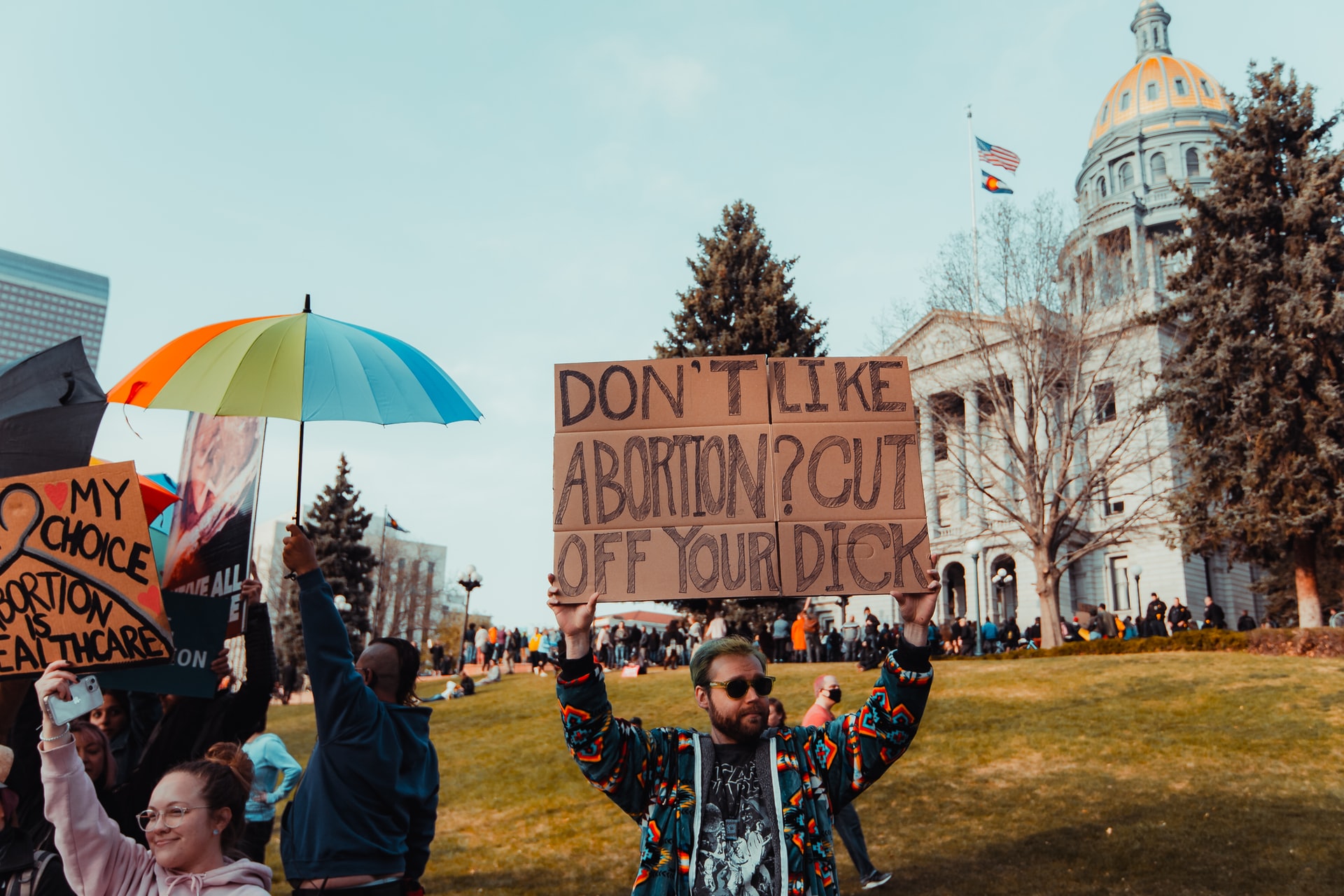The issues raised by Donald Trump’s second impeachment trial, which predictably ended with the acquittal of the former White House occupant, are the logical continuation of a presidency that has pushed the limits of the American legal system.
Lawyers for the former president- who was charged with inciting insurrection – relied heavily on the freedom of speech argument, which is guaranteed by the First Amendment to the Constitution. According to them, this amendment would cover the remarks made by Donald Trump on January 6, the day thousands of his supporters stormed the Capitol, as well as his repeated challenges to the outcome of the presidential election.
For many constitutional law professors, this is a “legally futile” argument since the question in this impeachment trial is not whether the former president committed a crime but whether he violated his oath to protect the Constitution. This is, however, a classic line of defense that Trump’s lawyers could use in a civil or criminal trial.
Beyond this case, the question of freedom of expression, tolerance for subversive content, as well as for hate speech in the United States must be asked if we want to understand recent American news. For example, the racist protests in Charlottesville in 2017, those against the police by the anti-racist movements Black Lives Matter or Antifa in 2019 and 2020, or the insurrection of January 6. The news has also reminded us of the great popularity of two provocative and controversial figures, each of whom presented themselves in their way as champions of free speech and who have recently passed away: right-wing conservative radio host Rush Limbaugh and pornography mogul Larry Flynt.
Freedom of speech: a unique but contested concept
For many Americans, freedom, and particularly freedom of speech, is one of the founding principles of their identity, contributing to the exceptionalism of their country.
It is true that the United States differs from other democracies in what might be considered an absolutist view of free speech. For example, under U.S. law, even hate speech is protected, and the Supreme Court has repeatedly held that there is no exception for hate speech in the First Amendment (Beauharnais v. Illinois, 1952; Matal v. Tam, 2017).
As former American Civil Liberties Union (ACLU) legal counsel Steven Shapiro reminds us, on this point, the United States is unique and at odds with the international legal framework set forth in the 1966 International Covenant on Civil and Political Rights (Article 20), which obliges signatories to prohibit hate speech and which the United States signed in 1992, precisely with reservations on this point.
Despite a quasi-religious reverence for the First Amendment, the issue of free speech is sometimes controversial within the United States itself, particularly in the current period of rising populism, increased political polarization, and a rise in an inflammatory and extremist speech on social networks. In the words of Justice Kagan, who sits on the Supreme Court, free speech has become a political weapon. This is especially true of the right and the far right.
Paradoxically, in the face of the rise of certain radical expressions, such as increasingly visible white nationalism, it is among the moderate left and the so-called “millennial” generation that we are beginning to see support for greater restrictions on free speech.
A chequered history
The right to free speech has a long history, being enshrined in the First Amendment, ratified in 1791:
“Congress shall make no law… to abridge the freedom of speech, of the press.”
Originally, therefore, this text concerned only laws passed by Congress. Over time, the Supreme Court has extended this protection to other branches of government, whether federal, state, local, legislative, executive, or judicial. It is worth noting in passing that this right does not apply to private entities, such as social networks, which can apply their freedom of commerce as they see fit.
Contrary to what one might think, the current liberal interpretation of the First Amendment is relatively recent. For a long time, there were many restrictions on free speech, partly because of differing societal norms, particularly in terms of sexual morality (the Comstock laws), but also for political reasons perceived to be related to the preservation of state interests (the Espionage Act of 1917). In particular, during the two world wars and the early Cold War, the Supreme Court upheld rulings against dissenters who opposed conscription or advocated revolutionary socialism or communism (as in Schenck v. United States, 1919 or Dennis v. United States, 1951).
When Earl Warren presided over the Court (1953-1969), everything changed in a context of greater tolerance for seditious speech related to civil rights and the war against Vietnam.
The liberal interpretation of the First Amendment also protected the hate speech of the Ku Klux Klan, as set forth in 1969 in Brandenburg v. Ohio- a landmark decision that still stands today.
Since then, free speech has generally been presumed to be protected, including hate speech, with specific exceptions. One of the lessons of the history of free speech in the United States is that it is, therefore, not set in stone that standards change and may change again.
The marketplace of ideas
U.S. law does, however, recognize some restrictions on free speech. The categories of speech that are less or not at all protected by the First Amendment include obscenity, defamation, incitement to riot, harassment, secret communications, trade secrets, classified documents, copyright, or patents.
In contrast, political speech is one of the most protected categories. The Supreme Court has even gone so far as to consider that limiting campaign spending is a violation of freedom of expression because it restricts the financial means for expressing an opinion, as stated first in Buckley v. Valeo (1976) and then, in an even more radical and controversial way, in Citizens United (2010).
If the lawsuits already filed against Donald Trump in connection with the Capitol insurrection go to trial, the issues of incitement to riot and the First Amendment will be at the heart of the pleadings. The Court, civil or even criminal, will then have to consider how far his January 6 rhetoric is protected by the First Amendment. According to Brandenburg v. Ohio, discussed above, free speech permits “calls for the use of force” and even “unlawful acts” unless it is an “imminent unlawful action that is likely to occur.” Thus, there is a great deal of subjectivity, and the assessment of context will determine whether Trump’s inflammatory rhetoric was intended to commit a crime and advocate an offense that is both imminent and likely to occur. This is known as the Brandenburg test.
The Brandenburg decision allows, for example, neo-Nazis to march legally, waving swastikas and shouting their hatred of Jews, as seen in Charlottesville in 2017. It has also allowed decades of misogynistic, homophobic, racist, and conspiratorial language to be used by Rush Limbaugh.
This decision is based on the principle that the competition of ideas in free and transparent public discourse will allow people to decide what they want to believe freely. This philosophy is illustrated by the liberal metaphor of the “marketplace of ideas,” used in a 1953 Supreme Court decision, which has since become a common analogy in American law.
Yet this metaphor also implies that, as with any market, the marketplace of ideas is shaped by power imbalances, particularly regarding racial and financial inequality. How can Donald Trump’s voice be equivalent to that of the average citizen? How would the biased algorithms of social networks allow for a fair and free marketplace of ideas? Many Americans do not trust their government to regulate this marketplace of ideas. Yet the counterexamples offered by the European Union or Canada show that more restrictions on free speech are not necessarily incompatible with democratic principles.
Sound off in the comments section below, and tell us what you want to read next and if you want to read more about freedom of speech.




Pingback: Iran Protests: 5 Ways Life Has Changed After 50 Days Of Demonstrations | Law blog online